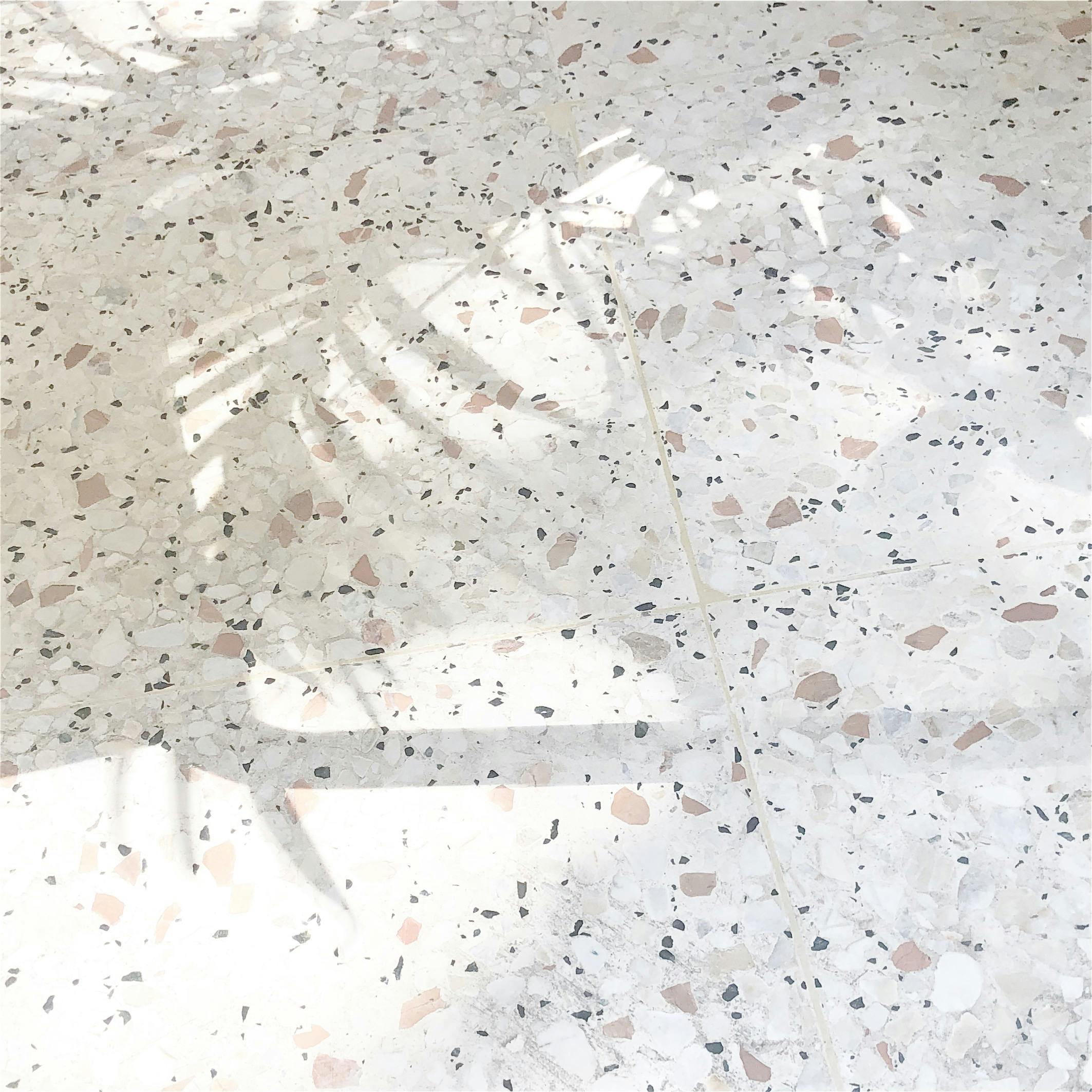"The Rebirth of Terrazzo: A Classic Material with Contemporary Appeal"
In the late 15th century, Italian mosaic artisans took the leftover pieces from expensive marble floors and set them in clay to create a more affordable flooring option. This innovative technique gave birth to Terrazzo, a composite material that offers a unique combination of durability, versatility, and aesthetic appeal. While Terrazzo was popular in the mid-century modern design era, it's currently experiencing a resurgence in popularity, making its mark on the contemporary design scene.

A Historical Look at Terrazzo
Terrazzo, meaning “terrace” in Italian, was first developed in Italy during the 15th century. Craftsmen would take bits of marble, glass, or other materials and embed them in clay or cement, then polish it to a high shine. This resourceful method allowed for beautiful, durable flooring that was more affordable than pure marble. Over time, Terrazzo’s popularity spread across Europe and eventually reached the United States.
In the mid-20th century, Terrazzo experienced a surge in popularity, becoming a signature component of the mid-century modern design movement. Its distinctive look and practical benefits made it an attractive choice for architects and interior designers. Despite its popularity in this period, Terrazzo fell out of favor during the latter part of the 20th century as design trends shifted.
The Modern Revival of Terrazzo
However, the 21st century has seen a renewed appreciation for Terrazzo. Designers today recognize its potential, not just as a flooring material, but as a versatile element that can be used in a variety of applications. From kitchen countertops and backsplashes to furniture and accessories, Terrazzo is making a comeback in a big way.
This resurgence is partly due to a broader trend towards incorporating natural materials and textures into interiors. The unique, speckled appearance of Terrazzo brings an organic, earthy quality to modern spaces. Additionally, its durability and low maintenance requirements make it an attractive option for high-traffic areas.
Terrazzo in Today’s Design Landscape
While Terrazzo’s origins lie in flooring, today’s designers aren’t limiting themselves to this traditional use. Kitchen countertops and backsplashes made of Terrazzo provide a practical, yet chic surface that’s easy to clean and highly resistant to stains. Similarly, Terrazzo tiles in bathrooms can create a striking and unique look that’s also hygienic and easy to maintain.
Beyond these practical applications, Terrazzo is also finding its way into more decorative elements. From lighting fixtures to furniture pieces, this versatile material is proving itself to be more than just a flooring solution. Its unique, speckled appearance adds interest and depth to any piece, making it a favorite among designers looking to make a statement.
Practicality and Aesthetics: The Terrazzo Advantage
Terrazzo’s resurgence isn’t just driven by aesthetics. Its durability, low maintenance, and long lifespan make it a practical choice for homeowners. When properly sealed, Terrazzo is resistant to water, stains, and bacteria, making it an excellent choice for kitchens and bathrooms. Additionally, its smooth, polished surface is easy to clean and can withstand the rigors of high-traffic areas.
In terms of aesthetics, Terrazzo offers endless possibilities. The material can be customized with a wide range of colors and materials, allowing designers to create a truly unique look. Whether it’s a subtle, understated pattern for a minimalistic space or a bold, vibrant design for a more eclectic interior, Terrazzo can cater to a wide range of styles and preferences.
In conclusion, the resurgence of Terrazzo is more than just a fleeting trend—it’s a testament to the timeless appeal and enduring practicality of this classic material. As designers continue to explore its potential, we can expect to see more innovative uses of Terrazzo in the world of home and garden design.




